The Contender writes: "@citizen, My argument is that scientists fall victim to group think sometimes."
~ ~ ~ ~ ~ ~ ~
How about admitting that all people fall victim to "group think" sometimes, some groups more than others?
With politicians and political advocates being near the top of the list of people who are susceptible to group think. In fact, they enthusiastically embrace group think, just look at the Republican or the Tea Party's xenophobia towards new or different ideas. Heck listen to the Republican's ranking member of the Science Committee, Rep. Paul Broun: If it ain't in the Bible it's "Hell-spawned lies." And, interestingly these are exactly the folks who scream loudest that their claims should be trusted more than the professional experts who understand the science.
But the thing is that "science" by it's very nature is skeptical, self-examining and open to self-correction since acquiring solid facts and genuine learning is its goal. Competing and cross checking each other's work and looking for the break-through to new perspectives and understanding is its imperative. And finding oneself making mistakes is an accepted part of the learning process - as opposed to the political arena where admitting a mistake is next to suicide.
The Contender then goes on:
"You are simply wrong about the facts you are claiming about the Hockey Stick. The observation remains that if all the proxies are just put into the standard processing methods, the traditional reconstruction of climate emerges including the Medieval Warm Period and the Little Ice Age. Only by massaging the data can the past climate events be made to vanish.'
~ ~ ~
The problem here is that only by limiting yourself to the science presented by the usual suspects, such as Heartland, SPPI, ClimateAudit, WUWT and such members of the echo-chamber can such a claim be sustained. The problem with those sources is they do science in a vacuum - meaning science that's isolated from the sunshine of open review and critique by experts in the field.
This is why I decided to break into the RealClimate.org files in order to reproduce a record of their discussion regarding the Hockey Stick. Mind you "Mr. Hockey Stick", that is Dr. Mann, is one of the authors at RC. I bring this up because in America when we charge someone with misdeeds or crimes - we allow, and in fact, expect them to respond to incriminating claims made against them.
========================
Filed under: Contributor Bio's — group @ 6 December 2004
~ ~ ~ 2004 ~ ~ ~
The term “Hockey Stick” was coined by the former head of NOAA’s Geophysical Fluid Dynamics Laboratory, Jerry Mahlman, to describe the pattern common to numerous proxy and model-based estimates of Northern Hemisphere mean temperature changes over the past millennium. This pattern includes a long-term cooling trend from the so-called “Medieval Warm Period” (broadly speaking, the 10th-mid 14th centuries) through the “Little Ice Age” (broadly speaking, the mid 15th-19th centuries), followed by a rapid warming during the 20th century that culminates in anomalous late 20th century warmth (Figure 1). Numerous myths regarding the “hockey stick” can be found on various non-peer reviewed websites and other non-scientific venues.
~ ~ ~ ~ ~ ~ ~
MM claim that the main features of the Mann et al (1998–henceforth MBH98) reconstruction, including the “hockey stick” shape of the reconstruction, are artifacts of a) the centering convention used by MBH98 in their Principal Components Analysis (PCA) of the North American International Tree Ring Data Bank (‘ITRDB’) data, b) the use of 4 infilled missing annual values (AD 1400-1403) in one tree-ring series (the ‘St. Anne’ Northern Treeline series), and c) the infilling of missing values in some proxy data between 1972 and 1980. Each of these claims are demonstrated to be false below.
[McIntyre and McKitrick have additionally been discredited in a recent peer-reviewed article by Rutherford et al (2004)].
[Added 1/6/05: See also "On Yet Another False Claim by McIntyre and McKitrick" which discredits the claimed "Monte Carlo" experiment results from the rejected McIntyre and McKitrick comment to Nature]
~ ~ ~ ~ ~ ~ ~
Numerous myths regarding the so-called "hockey stick" reconstruction of past temperatures, can be found on various non-peer reviewed websites, internet newsgroups and other non-scientific venues. The most widespread of these myths are debunked below:
{...}
MYTH #1: The "Hockey Stick" Reconstruction is based solely on two publications by climate scientist Michael Mann and colleagues (Mann et al, 1998;1999).
{...}
MYTH #2: Regional proxy evidence of warm or anomalous (wet or dry) conditions in past centuries contradicts the conclusion that late 20th century hemispheric mean warmth is anomalous in a long-term (multi-century to millennial) context.
{...}
MYTH #3: The "Hockey Stick" studies claim that the 20th century on the whole is the warmest period of the past 1000 years.
{...}
MYTH #4: Errors in the "Hockey Stick" undermine the conclusion that late 20th century hemispheric warmth is anomalous.
{...}
~ ~ ~ 2005 ~ ~ ~
The claim by MM that the hockey stick pattern arises as an artifact of the PCA centering convention used by MBH98 is seen to be false on multiple levels.
Here, however, we choose to focus on some curious additional related assertions made by MM holding that (1) use of non-centered PCA (as by MBH98) is somehow not statistically valid, and (2) that “Hockey Stick” patterns arise naturally from application of non-centered PCA to purely random “red noise”. Both claims, which are of course false, were made in a comment on MBH98 by MM that was rejected by Nature , and subsequently parroted by astronomer Richard Muller in a non peer-reviewed setting–see e.g. this nice discussion by science journalist David Appell of Muller’s uncritical repetition of these false claims. These claims were discredited in the response provided by Mann and coworkers to the Nature editor and reviewers, which presumably formed the primary basis for the rejection of the MM comment.
~ ~ ~ ~ ~ ~ ~
Senator James Inhofe (R) of Oklahoma recently provided us with an update of his views on the issue of climate change in a speech given on the opening senate session, January 4, 2005. His speech opened with the statement:
As I said on the Senate floor on July 28, 2003, “much of the debate over global warming is predicated on fear, rather than science.” I called the threat of catastrophic global warming the “greatest hoax ever perpetrated on the American people,” a statement that, to put it mildly, was not viewed kindly by environmental extremists and their elitist organizations.
Cutting through much of his polemic, Inhofe’s speech contains three lines of scientific argument which, according to him, provide “compelling new scientific evidence” that anthropogenic global warming is not threatening. We here submit his statements to scrutiny.
(1) The Paleoclimate Record
(2) Global Sea level Rise
(3) Recent Arctic warming
~ ~ ~ ~ ~ ~ ~
In a previous post, we discussed a number of examples where the “Peer Review” process has failed, and poor papers have been published in the ostensibly peer-reviewed literature. In this context, we revisit our previous discussions of the flawed work of McIntyre and McKitrick (henceforth “MM”). MM published a paper, in the controversial journal Energy and Environment, claiming to “correct” the proxy-based reconstruction of Northern Hemisphere temperatures published by Mann et al (1998–henceforth “MBH98″).
Following the all-too-familiar pattern, this deeply flawed paper was heavily promoted by special interests as somehow challenging the scientific consensus that humans are altering the climate (an excellent account is provided by science journalist Dan Vergano of USA Today here). As detailed already on the pages of RealClimate, this so-called ‘correction’ was nothing more than a botched application of the MBH98 procedure, where the authors (MM) removed 80% of the proxy data actually used by MBH98 during the 15th century period (failing in the process to produce a reconstruction that passes standard “verification” procedures–an error that is oddly similar to that noted by Benestad (2004) with regard to another recent McKitrick paper). Indeed, the bizarre resulting claim by MM of anomalous 15th century warmth (which falls within the heart of the “Little Ice Age”) is at odds with not only the MBH98 reconstruction, but, in fact the roughly dozen other estimates now published that agree with MBH98 within estimated uncertainties.
All of their original claims have now been fully discredited (see e.g. this previous post as well as this discussion of a paper ‘in press’ in the Journal of Climate by Rutherford et al). MM however, continue to promote false and specious claims.
~ ~ ~ ~ ~ ~ ~
~ ~ ~ ~ ~ ~ ~
~ ~ ~ ~ ~ ~ ~
The 10th Feb edition of Nature has a nice paper “Highly variable Northern Hemisphere temperatures reconstructed from low- and high-resolution proxy data” by Anders Moberg, DM. Sonechkin, K Holmgren, NM Datsenko, & W Karlin (doi:10.1038/nature03265). This paper takes a novel approach to the problem of reconstructing past temperatures from paleoclimate proxy data. A key result is a reconstruction showing more century-scale variability in mean Northern Hemisphere temperatures than is shown in previous reconstructions.
This result will undoubtedly lead to much discussion and further debate over the validity of previous work. The result, though, does not fundamentally change one of the most discussed aspects of that previous work: temperatures since 1990 still appear to be the warmest in the last 2000 years.
The novel thing about this paper is the use of wavelets (a statistical tool common in image-processing software) to separate the low and high-frequency components of the data.
http://www.realclimate.org/index.php/archives/2005/02/moberg-et-al-highly-variable-northern-hemisphere-temperatures/
~ ~ ~ ~ ~ ~ ~
Due to popular demand, we have put together a ‘dummies guide’ which tries to describe what the actual issues are in the latest controversy, in language even our parents might understand. A pdf version is also available. More technical descriptions of the issues can be seen here and here.
This guide is in two parts, the first deals with the background to the technical issues raised by McIntyre and McKitrick (2005) (MM05), while the second part discusses the application of this to the original Mann, Bradley and Hughes (1998) (MBH98) reconstruction. The wider climate science context is discussed here, and the relationship to other recent reconstructions (the ‘Hockey Team’) can be seen here.
NB. All the data that were used in MBH98 are freely available for download at ftp://holocene.evsc.virginia.edu/pub/sdr/temp/nature/MANNETAL98/ (and also as supplementary data at Nature) along with a thorough description of the algorithm.
~ ~ ~ ~ ~ ~ ~
~ ~ ~ ~ ~ ~ ~
Many readers will be aware that three scientists (two of which are contributors to this site, Michael Mann and Ray Bradley) have received letters from Representative Joe Barton (Texas), Chairman of the House Energy and Commerce Committee specifically requesting information about their work on the ‘hockey stick’ papers (Mann et al (1998) and Mann et al (1999)) as well as an enormous amount of irrelevant material not connected to these studies.
Many in the scientific community would welcome any genuine interest in climate change from the committee, but the tone and content of these letters have alarmed many scientists and their professional organisations. In the words of Alan Leshner, CEO of the American Association for the Advancement of Science, the Barton letters “give the impression of a search for some basis on which to discredit these particular scientists and findings, rather than a search for understanding.” Other organisations and individual scientists have also expressed strong concerns:
- A statement from the EGU
- A Nature editorial
- A letter from US scientists (including leading members of the NAS, a Nobel Prize winner and two of us (ES, GS))
- A letter from the head of the National Academy of Sciences, and
- A commentary from Tom Crowley in EOS
- Other politicians, the House Committee on Science and Henry Waxman.
The individual responses have now been delivered (and you can read them here):
These responses emphasise two main points that we have explained in great detail in earlier postings on this site:
~ ~ ~ ~ ~ ~ ~
Aug 31, 2005 ... The untold story of how a front-page article and powerful U.S. politicians morphed former mining executive Stephen McIntyre into a scientific superstar.
often cited to make the case for global warming— plucked McIntyre from obscurity and got him featured on the front page of the February 14, 2005, Wall Street Journal. The page-one story caught the attention of Rep. Joe Barton (R-TX), chair of the House Committee on Energy and Commerce. By late June, Barton was creating his own headlines by demanding that prominent researchers turn over the raw data from the hockey-stick analysis.
~ ~ ~ ~ ~ ~ ~
The two comments focus on the ‘PC normalisation’ issue raised in MM05 which we discussed previously. Specifically, von Storch and Zorita show that in a GCM model emulation of the Mann, Bradley and Hughes (MBH) method, changing the PC normalisation technique makes no difference to the eventual reconstruction (i.e. it is not the normalisation that creates the ‘hockeystick’), consistent with earlier conclusions. Huybers comments that neither of the two suggested normalisations are actually optimal, and proposes a third method which looks like it gives results halfway between MBH and MM05. However, given the von Storch result, this too is unlikely to matter in the final reconstruction.
~ ~ ~ 2006 ~ ~ ~
This is what Osborn and Briffa have done in their article “The Spatial Extent of 20th Century Warmth in the Context of the Past 1200 Years”, which appears in the Feb 10 issue of the journal Science. The article uses a rigorous statistical methodology to re-examine the question of whether late 20th century warmth is anomalous in the context of the past 1200 years. This is done in a manner that does not require the explicit calibration of the proxy records. In essence, the authors have revisited a question posed earlier in a paper by Willie Soon and Sallie Baliunas (2003: see our previous discussion here), investigating whether or not evidence from past proxy records of temperature support the existence of past intervals of warmth with the widespread global scale of 20th century warming. The Soon and Baliunas (2003) paper was heavily criticized in the scientific literature (e.g. Mann et al, 2003) for failing to distinguish between proxy evidence of temperature and drought or precipitation, and for not accounting for whether temperature anomalies in different regions were contemporaneous or not.
~ ~ ~ ~ ~ ~ ~
The Mann et al. large-scale surface temperature reconstructions were the first to include explicit statistical error bars, which provide an indication of the confidence that can be placed in the results. In the Mann et al. work, the error bars were relatively small back to about A.D. 1600, but much larger for A.D. 1000–1600. The lower precision during earlier times is caused primarily by the limited availability of annually resolved paleoclimate data: That is, the farther back in time, the harder it is to find evidence that provides reliable annual information. For the period before about A.D. 900, annual data series are very few in number, and the non-annually resolved data used in reconstructions introduce additional uncertainties.
~ ~ ~ ~ ~ ~ ~
There is much that could be said about the hearings (and no doubt will be) and many of the participants (Tom Karl, Tom Crowley, Hans von Storch, Gerry North) did a good job in articulating the big picture on climate change independently of the ‘hockey stick’ study as we’ve highlighted before. But it seems to us that there was a missing element in the discussions. That element was the direct implication of the critique that was the principal focus of Wegman’s testimony and that was mentioned periodically throughout the day.
~ ~ ~ 2007 ~ ~ ~
Even more wrong is the claim that “the upcoming report is also missing any reference to the infamous ‘hockey stick’ “. Not only are the three original “hockey stick” reconstructions from the IPCC (2001) report shown in the (draft) paleoclimate chapter of the new report, but they are now joined by 9 others. Which is why the SPM comes to the even stronger conclusion that recent large-scale warmth is likely to be anomalous in the context of at least the past 1300 years, and not just the past 1000 years.
~ ~ ~ ~ ~ ~ ~
~ ~ ~ 2008 ~ ~ ~
That’s not the start of a joke, but it is a good jumping off point for a discussion of the latest publication on paleo-reconstructions of the last couple of millennia. As has been relatively widely reported, Mike Mann and colleagues (including Ray Bradley and Malcolm Hughes) have a new paper out in PNAS with an update of their previous work. And this is where the question posed above comes in: the difference is that with time scientists can actually make progress on problems, they don’t just get stuck in an endless back and forth of the same talking points.
We discussed what would be required in an update of these millennial reconstructions a few months back and the main principles remain true now. You need proxies that are a) well-dated, b) have some fidelity to a climate variable of interest, c) have been calibrated to those variable(s), d) that are then composited together somehow, and e) that the composite has been validated against the instrumental record. ...
~ ~ ~ ~ ~ ~ ~
Much in the spirit of the Fraser Institute’s damp squib we reported on last year, S. Fred Singer and his merry band of contrarian luminaries (financed by the notorious “Heartland Institute” we’ve commented on previously) served up a similarly dishonest ‘assessment’ of the science of climate change earlier this year in the form of what they call the “NIPCC” report (the “N” presumably standing for ‘not the’ or ‘nonsense’). This seems to be making the rounds again as Singer and Heartland are gearing up for a reprise of last year’s critically…er…appraised “Conference on Climate Change” this March. Recently some have asked us for our opinion of the report and so we’ve decided we ought to finally go ahead and opine. Here goes.
The fact that the very title of the report summary (“Nature, Not Human Activity, Rules the Climate“) itself poses–at best–a false dichotomy is not an auspicious start. The fact that the fonts and layout are identical to the real IPCC report is another indication that this isn’t quite on the level (and reminiscent of the infamous fake PNAS paper that accompanied the first ‘Oregon Petition’).
Reading the table of contents, the report has eight chapters (in addition to an introduction and conclusions chapter). Five of these, quite remarkably, have titles which are simply untrue. The remaining three chapters pose loaded questions which are disingenuous and misleading, if not outright dishonest, with ‘answers’ provided by the authors.
~ ~ ~ 2009 ~ ~ ~
The letter he has written to the NY Times public editor, with its liberal sprinkling of his usual pomposity, has at its heart the following graph:
~ ~ ~ ~ ~ ~ ~
Scientists document their procedures and findings in the peer-reviewed literature in such a way that they can be double-checked and challenged by others. The proper way to challenge results is, of course, also through the peer-reviewed literature, so that the challenge follows the same standards of documentation as did the original finding.
Such a challenge can either be in form of a new, independent paper, or in the form of a comment to a published paper. The latter is the appropriate avenue if the challenge is not based on new data (and is thus a piece of research in its own right), but is a criticism of the methods used in a paper.
~ ~ ~ ~ ~ ~ ~
Indeed, according to both the National Review and the Daily Telegraph (and who would not trust these sources?), even Al Gore’s use of the stair lift in An Inconvenient Truth was done to highlight cherry-picked tree rings, instead of what everyone thought was the rise in CO2 concentrations in the last 200 years. ...
~ ~ ~ 2010 ~ ~ ~
It is no secret that we have been unimpressed by the quality of reporting of climate science or late. From the insinuation that data were manipulated (for which there remains no evidence, primae facie or otherwise), to the suggestion that “climate skeptics” had somehow been kept from publishing in peer reviewed literature (how, we wonder, does Lindzen keep getting published?), to the blind repetition of false claims of major errors in the IPCC (when only a couple of actual errors – and none of them in the primary (Working Group 1) report – have been found), to the falsehood that climate data have not been readily available (yes, they have), the reporting has been more akin to the populist fearmongering of the McCarthy era than to the celebrated investigative journalism of Watergate.
That’s too bad, and not just because sensationalistic journalism may have done lasting damage to some institutions and individual scientists. More importantly, it has done damage to public understanding, quite the opposite of the rightful role of the free press in a democratic society.
~ ~ ~ ~ ~ ~ ~
Update: Another review of the book has been published by Alistair McIntosh in the Scottish Review of Books (scroll down about 25% through the page to find McIintosh’s review)
Update #2 (8/19/10): The Guardian has now weighed in as well.
If you don’t know much about climate science, or about the details of the controversy over the “hockey stick,” then A. W. Montford’s book The Hockey Stick Illusion: Climategate and the Corruption of Science might persuade you that not only the hockey stick, but all of modern climate science, is a fraud perpetrated by a massive conspiracy of climate scientists and politicians, in order to guarantee an unending supply of research funding and political power. ...
~ ~ ~ 2011 ~ ~ ~
Paleoclimate:
1. A new study by Spielhagen and co-authors in Science reconstructs temperatures of North Atlantic source waters to the Arctic for the past two millennia, adding another very long-handled Hockey Stick to the ever-growing league.
1. A new study by Spielhagen and co-authors in Science reconstructs temperatures of North Atlantic source waters to the Arctic for the past two millennia, adding another very long-handled Hockey Stick to the ever-growing league.
2. From last week, an article in Science Express by Buntgen et al reconstructing European summer temperature for the past 2500 years, finding that recent warming is unprecedented over that time frame, and providing some historical insights into the societal challenges posed by climate instability (listen here for an interview with mike about the study on NPR’s All Things Considered).
3. The team of ice core researchers at WAIS Divide reaches its goal of 3300 meters of ice. [WAIS Divide, central West Antarctica, is a site of significant warming in Antarctica, over at least the last 50 years, a result recently confirmed by the study of O'Donnell et al. (2010); Stay tuned for more on the that soon].
~ ~ ~ 2012 ~ ~ ~
First, a study by Gergis et al., in the Journal of Climate [Update: this paper has been put on hold - see comments] uses a proxy network from the Australasian region to reconstruct temperature over the last millennium, and finds what can only be described as an Australian hockey stick...
Second, Orsi et al., writing in Geophysical Research Letters, use borehole temperature measurements from the WAIS Divide site in central West Antarctica, a region where the magnitude of recent temperature trends has been subject of considerable controversy...
Last but not least, a new paper by Zagorodnov et al. in The Cryosphere, uses temperature measurements from two new boreholes on the Antarctic Peninsula to show that the decade of the 1990s (the paper state “1995+/-5 years”) was the warmest of at least the last 70 years.
~ ~ ~ ~ ~ ~ ~
Oeschger left rather large shoes to fill, and it is a great honor for Mike Mann to win an award bearing Oeschger’s name. Most everyone will probably assume that the award is for Mike’s well known “hockey stick” work. No doubt this is part of it, but the Oeschger award has never been given simply for the publication of one study, but rather for a career’s-worth of outstanding achievements. ...
~ ~ ~ ~ ~ ~ ~
By rights we should be outraged and appalled that (yet again) unfounded claims of scientific misconduct and dishonesty are buzzing around the blogosphere, once again initiated by Steve McIntyre, and unfailingly and uncritically promoted by the usual supporters. However this has become such a common occurrence that we are no longer shocked nor surprised that misinformation based on nothing but prior assumptions gains an easy toehold on the contrarian blogs (especially at times when they are keen to ‘move on’ from more discomforting events).
So instead of outrage, we’ll settle for simply making a few observations that undermine the narrative that McIntyre and company are trying to put out...
~ ~ ~ ~ ~ ~ ~
Update 7/12/12: Media Matters comments on the latest misrepresentations of the Esper et al study discussed in our article: ‘Surprise: Fox News Fails Paleoclimatology’
Update 7/13/12: Further comment from Bob Ward of the Grantham Institute in Huffington Post UK “The World’s Most Visited Newspaper Website Continues to Regurgitate Nonsense from Climate Change ‘Sceptics’”
Update 7/14/12: Some additional context provided by this LiveScience article
Update 7/13/12: Further comment from Bob Ward of the Grantham Institute in Huffington Post UK “The World’s Most Visited Newspaper Website Continues to Regurgitate Nonsense from Climate Change ‘Sceptics’”
Update 7/14/12: Some additional context provided by this LiveScience article
It’s been a tough few months for tree-rings, perhaps unfairly. Back in April, we commented on a study [that one of us (Mike) was involved in] that focused on the possibility that there is a threshold on the cooling recorded by tree-ring composites that could limit their ability to capture the short-term cooling signal associated with larger volcanic eruptions. Mostly lost in the discussion, however, was the fact–emphasized in the paper—that the trees appeared to be doing a remarkably good job in capturing the long-term temperature signal—the aspect of greatest relevance in discussions of climate change.
This week there have been two additional studies published raising questions about the interpretation of tree-ring based climate reconstructions...
~ ~ ~ 2013 ~ ~ ~
Update: Tamino has three excellent posts in which he shows why the Holocene reconstruction is very unlikely to be affected by possible discrepancies in the most recent (20th century) part of the record. The figure showing Holocene changes by latitude is particularly informative.
~ ~ ~ ~ ~ ~ ~
It is well known that ice shelves on the Antarctic Peninsula have collapsed on several occasions in the last couple of decades, that ice shelves in West Antarctica are thinning rapidly, and that the large outlet glaciers that drain the West Antarctic ice sheet (WAIS) are accelerating. The rapid drainage of the WAIS into the ocean is a major contributor to sea level rise (around 10% of the total, at the moment).
All of these observations match the response, predicted in the late 1970s by glaciologist John Mercer, of the Antarctic to anthropogenic global warming. As such, they are frequently taken as harbingers of greater future sea level rise to come. Are they?
Two papers published this week in Nature Geoscience provide new information that helps to address this question. One of the studies (led by me) says “probably”, while another (Abram et al.) gives a more definitive “yes”.
~ ~ ~ ~ ~ ~ ~
In a major step forward in proxy data synthesis, the PAst Global Changes (PAGES) 2k Consortium has just published a suite of continental scale reconstructions of temperature for the past two millennia in Nature Geoscience. More information about the study and its implications are available at the FAQ on the PAGES website and the datasets themselves are available at NOAA Paleoclimate.
The main conclusion of the study is that the most coherent feature in nearly all of the regional temperature reconstructions is a long-term cooling trend, which ended late in the 19th century, and which was followed by a warming trend in the 20th C.
~ ~ ~ ~ ~ ~ ~
~ ~ ~ ~ ~ ~ ~
...A response to the critics
The publication of our paper provides a timely opportunity to revisit and respond to a series of unfounded criticisms that have been levelled at our work in recent years, mostly originating from Steve McIntyre at the ClimateAudit blog, though they have been widely repeated and embellished by other commentators.
It is of course usual for results to be improved and superseded as science progresses. Our new Yamalia ring-width chronology differs from the Yamal chronology published by Briffa (2000) – see Figure 2a for a comparison...
~ ~ ~ ~ ~ ~ ~
~ ~ ~ ~ ~ ~ ~ ~ ~ ~ ~ ~ ~ ~ ~ ~ ~ ~ ~ ~ ~ ~ ~ ~ ~ ~ ~ ~
- 'The hockey stick is broken' Coby Beck "How to Talk to a Climate Skeptic"
- The 'hockey stick' graph has been proven wrong Michael Le Page, "Climate Change: A guide for the perplexed"
- Myth vs. Fact Regarding the "Hockey Stick" Michael Mann, "Response to common contrarian arguments"
- What If … the "Hockey Stick" Were Wrong? Stefan Rahmstorf, "Response to common contrarian arguments"
- Dummies guide to the latest “Hockey Stick” controversy Gavin Schmidt and Caspar Amman "Response to common contrarian arguments"
- Hockey sticks: Round 27 RealClimate "Response to common contrarian arguments"
- Followup to the 'Hockeystick' Hearings RealClimate "Response to common contrarian arguments"
- Recent increase in global temperature Alan Thorpe, "Natural Environment Research Council Climate change challenge: Summary of the debate"
- Myth #9: Modern temperature increases are a direct result of the Earth’s climate exiting the Little Ice Age Brian Angliss, "Anti-global heating claims - a reasonably thorough debunking"
- "The Hockey Stick is broken. Michael Mann refuses to release his code & data." Logical Science, "Common Arguments from Global Warming Skeptics"
- NRC report on hockey stick released Tim Lambert, Deltoid, June 22, 2006
- The missing piece at the Wegman hearing RealClimate, 19 July 2006
- The Hockey Stick Controversy John P. Reisman, OSS Foundation - March 9, 2009

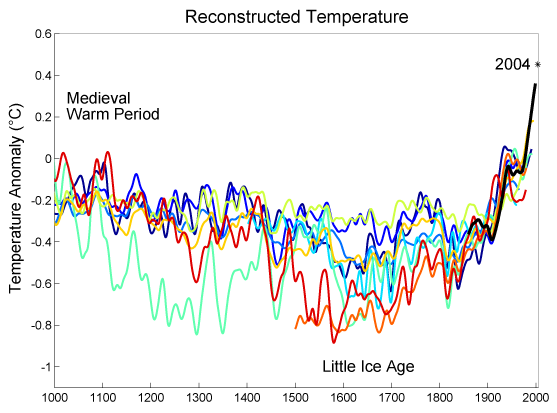
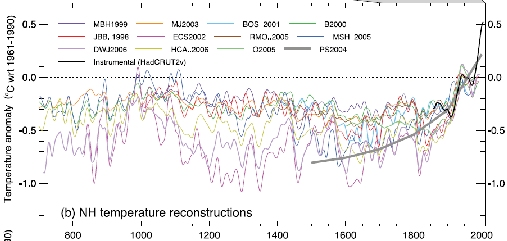
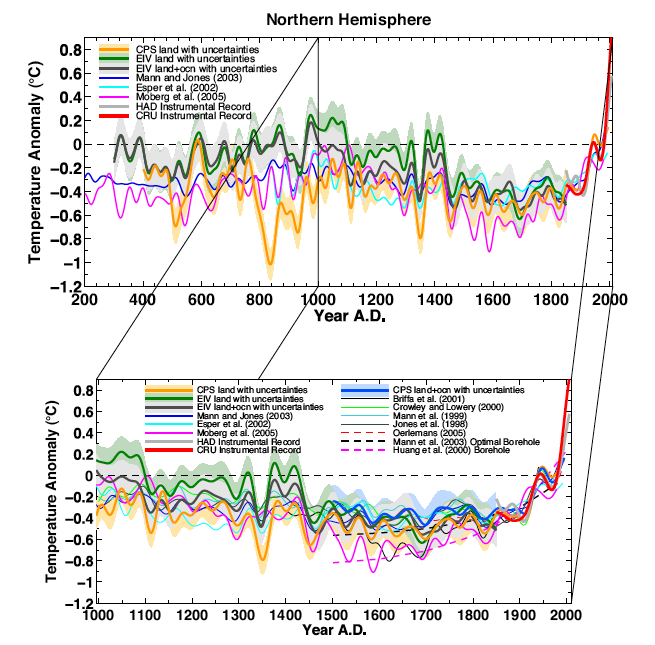

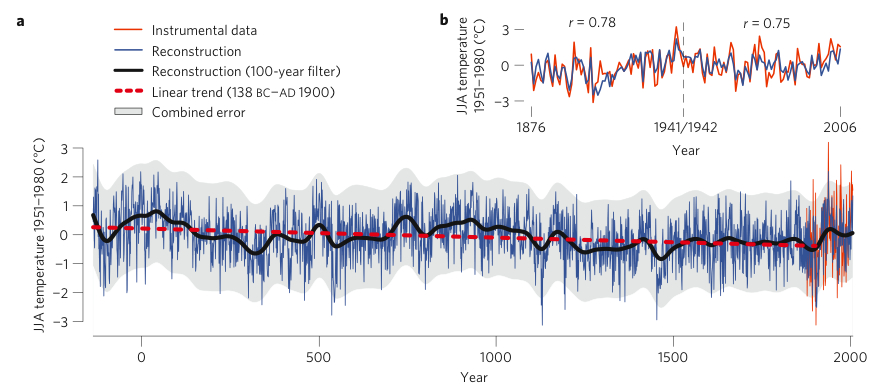
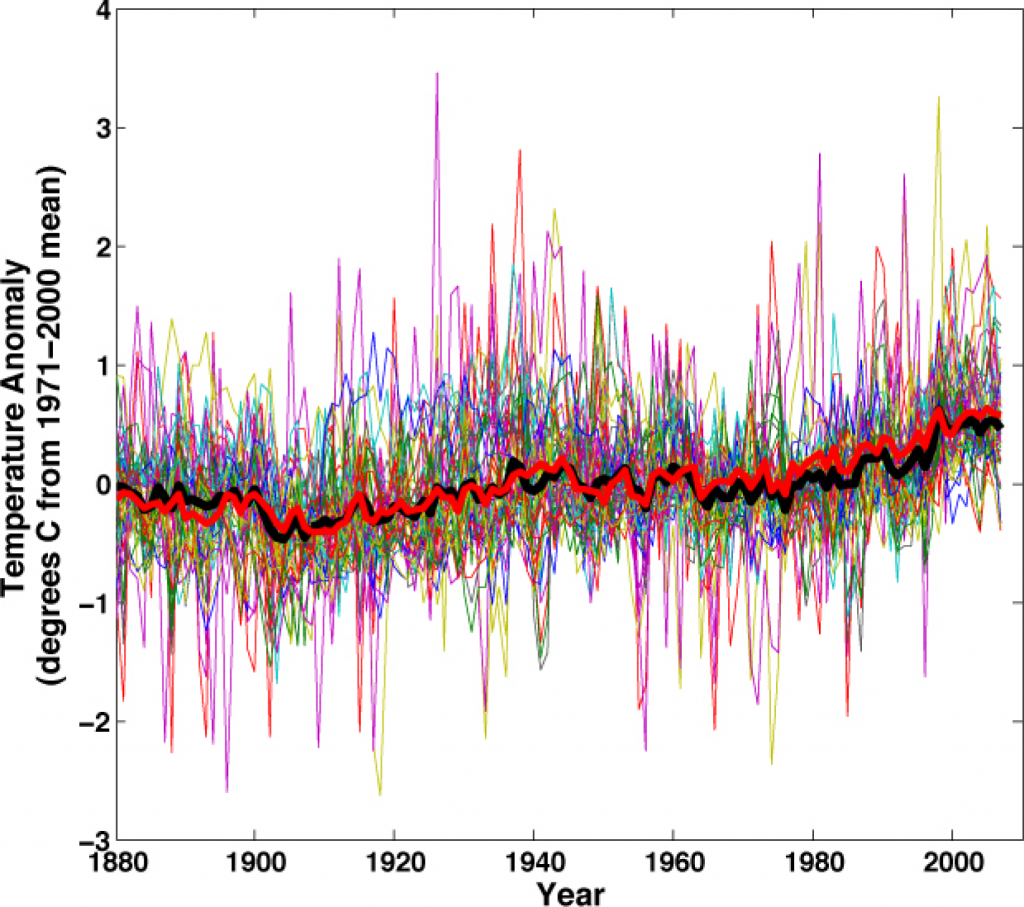
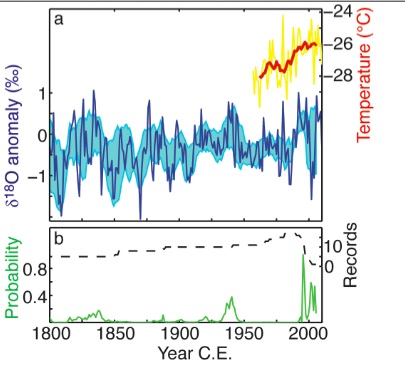

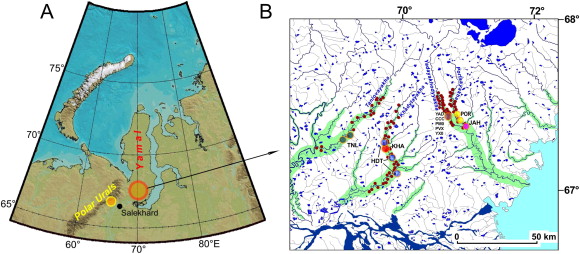
No comments:
Post a Comment